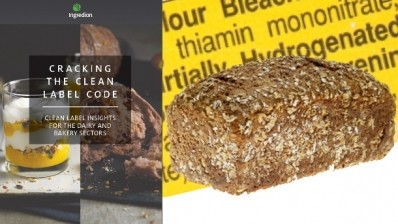Health-minded shoppers want easy-to-read label information

Busy shoppers looking for quick yet healthy foods now make up the majority of consumers, said colouring foods manufacturer GNT Group – which commissioned the study from TNS - noting 36% of the 5,175 shoppers quizzed worldwide fit in the ‘busy health seekers’ category.
Easy ingredient information on labels which can be quickly understood is key to grabbing their attention despite busy schedules, they said.
The rise of the busy yet healthy shopper group is a result of increasingly hectic lifestyles with no regular eating habits, but growing emphasis on healthy eating.
“Due to a hectic life with no regular eating habits, members of this group like their meals to be easy and convenient,” the GNT team said.
“Nonetheless, they place great value on healthy food and look for products without artificial additives – particularly synthetic colourants. As time is short, busy health seekers wish to see short, easy to understand ingredient information in order to quickly find out what’s inside their foods.”
The survey is not the first in recent months to suggest simple, accessible labelling is the way forward.
The UK Food Standards Agency (FSA) recently suggested companies use more visual labels which can be understood quicker than detailed nutritional information.
Avoiding artificial additives
Simple nutritional information did not just appeal to busy health seekers in the new survey – 67% of all shoppers asked were looking for easy-to-understand information, GNT added.
And the most important factor in deciding if a product is healthy is the presence of artificial ingredients, the team noted, with 77% of shoppers preferring to avoid them.
“Although consumers place great importance on the ‘inner value’ of a product, when shopping they spend on average less than six seconds studying the package,” the team said.
“This means shoppers do not evaluate every food component individually but rather search for specific ingredients they consider ‘unnatural’ or ‘unhealthy’. Consequently, the wish to avoid artificial additives has the highest priority.”
Absence of preservatives and artificial additives was particularly important when buying sweets, ice cream and yoghurt, the consumers agreed.
Trust issues
However, GNT says trust still needs to be built around natural claims since consumers are still suspicious this could be an exaggeration.
“Today’s consumers are smart, and as their knowledge develops it is increasingly important to inform what is in the product rather than use claims about what is not,” the team said.
“A move to positive communication is essential to gain consumer trust. Increasingly manufacturers emphasise the naturalness of their products by using negative front-of pack claims, yet 45% of consumers don‘t believe brands that claim to be natural.
“Therefore manufacturers priority should be to build the trust of their consumers using positive front of pack messaging.”
‘Coloured with Fruit and Vegetables’ was one claim of naturalness which had credibility and was said to have the ability to uplift brand preference by up to 23.1%.
Other positive front-of-pack claims such as ‘low fat’ could also sway shoppers to buy products more than detailed nutritional label information could, another team of researchers said earlier this summer.
The survey and other shoppers
Respondents came from the UK, Spain, Germany, France, Poland, the US, Thailand, Indonesia, China and Brazil.
The team simulated a typical supermarket shelf scenario, and did deeper analysis of four product categories; soft drinks, sweets, yoghurt and ice cream. They analysed the way consumers value different elements of a product, including price levels, brands and claims.
Beside the busy health seekers set, shoppers were categorised as conscious health seekers (15% of respondents), caring parent or role model (12%), budget and basic shoppers (15%) and convenience seekers (22%).
Conscious health seekers and parents aired on the healthier end of the spectrum, mindful of their own and children’s’ wellbeing, while budget and basics and convenience shoppers were more concerned with cost and handiness than nutritional value.
In any case, GNT said shoppers are moving towards the more health conscious categories and manufacturers need to be more mindful of their ingredients if they want to capture the growing numbers.
“As consumers become more discerning and the need to scrutinise packaging becomes more prominent in the food and beverage industry, it becomes vital for manufacturers to select desirable ingredients and to position their products as trustworthy and credible,” GNT said.

























